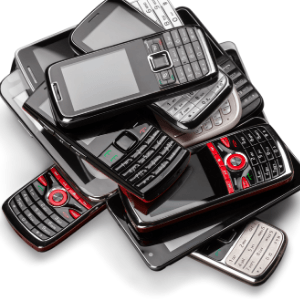Product Stewardship
We all know that we only have this one earth, so let’s look at ways to make better use of its precious resources. A good start is to talk about product stewardship.
By Dr Katharina Devitt

What is Product Stewardship?
The newly founded Product Stewardship Centre of Excellence says: “Product stewardship is about companies, brands and retailers taking greater responsibility for their products and services across their whole life cycle. Product stewardship leads to design of better products, using and reusing products and materials efficiently and putting in place effective end-of-life recovery systems.”
The Australian Department of Agriculture, Water and the Environment defines it as “Everyone who imports, designs, produces, sells, uses and disposes of products has a shared responsibility to reduce the environmental and human health and safety impacts of those products”.
You will notice that in this last definition we as consumers carry some responsibility as well! Not only are producers and businesses encouraged to re-think their production processes, packaging, and lifecycle of their products but individuals should consider how they use, re-use, recycle or even avoid buying products.
Why is it so important?
You would think that it goes without saying to be mindful of the resources that go into production of our everyday goods and services. However, the sad truth is that for many products, planned obsolescence and production with virgin materials is still more profitable than reusing and recycling. A good example is smartphones. How often do you buy a new device? Do you wait until the old one is unusable? Do you make an effort to get it repaired? If repair is impossible, do you make sure your old phone gets recycled appropriately? If you can say yes to all of the above, you are way ahead of the curve! Chances are, however, that your phone would at some point become unusable not because of breakdown of the material but because the operating system is not “supported” by the manufacturer anymore. And because ever increasing demands of storage space of newer app versions mean you cannot actually use your device for any modern applications, nor are repair or upgrade parts available for older devices. This is a classic example where the manufacturers plan for “obsolescence” of your device, artificially decreasing its lifespan and thereby forcing consumers to buy a new device sooner.
According to Mobile Muster, Australians buy a new mobile phone on average every 2.5 years. What’s worse – old phones often don’t get recycled and end up gathering dust in drawers (5 million of them in Australia alone) and new phones are produced with raw (or “virgin” resources), a lot of them rare metals that need to be mined in environmentally harmful ways.
This is where product stewardship can make a difference.
If all of the 5 million unused phones in Australia were recycled, 9,850 tonnes of mineral resources for new mobile phones could be recovered that would otherwise need to be extracted from the ground.
Implementing good product stewardship can help us move towards a circular economy and preserve our natural resources while also reducing greenhouse gas emissions. Just think about all the products you use in daily life such as computers, TVs, furniture, clothing, toys and many others, and all the packing they come in.
So what can you do to support it?
Buy consciously:
Before you buy a new device or product, or even consumables like food, take a moment to think – do you actually need it, or is there still some life left in your old device? Is the manufacturer committed to reducing carbon emissions and producing sustainable goods, do they have a recycling scheme? In the case of necessary consumables, think about how it is packaged: recycled and recyclable cardboard is better than single-use plastic.
Declutter:
Do you have old electronic devices gathering dust in your drawers? How many of the clothes in your wardrobe do you actually wear? Think not just of the space you create by decluttering, but also of the valuable resources you feed back into circulation by donating or recycling unused items.
Become educated and ask questions:
More and more manufacturers and retailers commit to Product Stewardship programs. Ask how you can recycle their products and find out about their end-of-life plan for their goods.
Utilise existing recycling services:
In addition to what you can recycle through your kerbside, make an extra effort to recycled specialised ‘hard to recycle’ items such as printer cartridges tyres and batteries through programs.
Finally, keep in mind that you as a consumer have a lot of power to induce change! Not buying a product that does not follow good stewardship principles and supporting products that do is the best way to promote change.
Katharina is a scientist with a passion for reducing waste. She lives in Brisbane with her husband and daughter.
Search for other blog topics:



